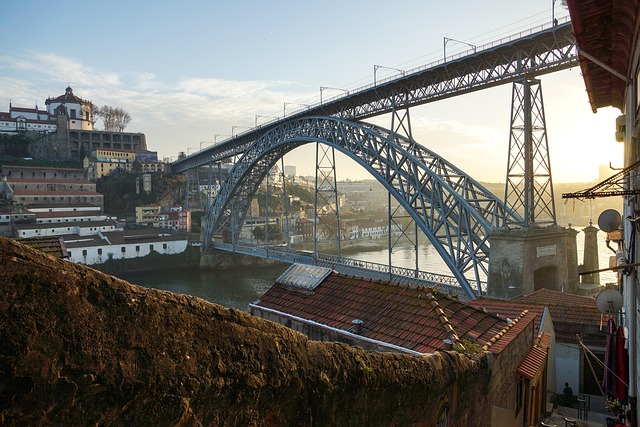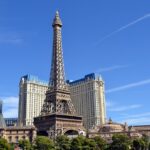Karachi, Pakistan's most populous city, is characterized by two contrasting areas: Faisal Cantt, a government and residential hub with modern amenities, and Malir Cantt, an industrial and commercial center. The Falcon Complex in Faisal Cantt, named after Pakistan's first Prime Minister, stands as a symbol of Karachi's architectural evolution and government presence. Malir Cantonment, while offering military-civilian coexistence and modern infrastructure, lags behind in recreational areas and utility services compared to Faisal Cantt. Both cantts have contributed to Karachi's economic vibrancy through the development of business hubs, creating job opportunities and enhancing social integration.
In the heart of Karachi, Pakistan’s vibrant metropolis, lies a distinct dichotomy between Falcon Complex Faisal and Malir Cantt. This article delves into the unique geographical setting of the city, exploring two contrasting areas that have shaped the urban landscape. Through a historical lens, we uncover the story of Falcon Complex Faisal while examining the military-urban interplay at Malir Cantonment. We then compare amenities, infrastructure, and their profound social and economic effects on local communities, highlighting Karachi’s dynamic nature.
- Understanding the Geography: Karachi's Dual Cantts
- Falcon Complex Faisal: A Historical Perspective
- Malir Cantonment: Military and Urban Coexistence
- Comparison: Amenities and Infrastructure
- The Social and Economic Impact on Local Communities
Understanding the Geography: Karachi's Dual Cantts

Karachi, Pakistan’s vibrant metropolis, is home to two distinct areas that play pivotal roles in the city’s urban landscape—Falcon Complex Faisal Cantt and Malir Cantt. Understanding the geography of these dual cantts (administrative divisions) is essential to appreciating Karachi’s complex tapestry.
Located in the northern part of the city, Falcon Complex Faisal Cantt stands as a bustling hub for government offices and residential areas. It is known for its strategic importance, housing various administrative buildings, including the headquarters of military divisions. In contrast, Malir Cantt, situated in the southeastern corner, has evolved into a dynamic industrial and commercial center. This area boasts a diverse mix of industries, contributing significantly to Karachi’s economic vibrancy. The dual nature of these cantts reflects the multifaceted character of Karachi, where each region plays its part in shaping the city’s identity, much like different threads weaving together a vibrant tapestry.
Falcon Complex Faisal: A Historical Perspective

Falcon Complex Faisal, a prominent landmark in Karachi, boasts a rich historical background that has shaped the city’s skyline and development. This complex, named after Pakistan’s first Prime Minister, Liaquat Ali Khan, was designed as a symbol of progress and modern infrastructure during the country’s early years. The construction of Falcon Complex Faisal began in the 1960s, reflecting Karachi’s transformation into a bustling metropolis.
The complex stands as a testament to the city’s architectural evolution, blending traditional elements with modern design. Over the years, it has housed various governmental offices, contributing significantly to the administrative landscape of Karachi. Its strategic location and iconic status make it a defining feature of the city, reflecting its historical journey from a colonial port to a vibrant, fast-paced urban center.
Malir Cantonment: Military and Urban Coexistence

Malir Cantonment, a vibrant part of Karachi, is an intriguing example of military and urban coexistence. This strategic location, nestled along the city’s coastline, serves as both a bustling military hub and an integral part of the metropolitan area. The cantonment houses various military installations, training facilities, and accommodation for serving personnel, creating a unique blend of infrastructure and community.
The urban fabric of Malir is characterized by a harmonious interplay between the military presence and civilian development. Despite being home to significant defense sectors, the area boasts modern amenities, residential complexes, and commercial hubs, attracting residents from diverse backgrounds. This balance ensures that Karachi’s citizens have access to quality services while also providing a secure environment for the country’s armed forces.
Comparison: Amenities and Infrastructure

When comparing Falcon Complex Faisal with Malir Cantt, Karachi, the disparity in amenities and infrastructure is stark. Faisal’s complex boasts a well-developed network of modern facilities, including state-of-the-art fitness centers, spacious parks, and high-end commercial spaces. In contrast, while Malir Cantt also offers some essential services, it falls short in terms of overall sophistication. The latter area lacks the extensive recreational areas and contemporary business hubs that Faisal’s complex provides, making it a less appealing choice for residents seeking a vibrant urban lifestyle.
In terms of infrastructure, Falcon Complex Faisal exceeds expectations with its efficient transportation systems, reliable utility services, and well-maintained public spaces. In contrast, Malir Cantt struggles to match these standards, presenting challenges in terms of accessibility and overall livability. These differences highlight the significant gap between the two locations, favoring Faisal’s complex as a more desirable destination for those prioritizing amenities and infrastructure in Karachi.
The Social and Economic Impact on Local Communities

The development of Falcon Complex in Faisal and Malir Cantt, Karachi, has significantly influenced the social fabric and economic landscape of the surrounding communities. These areas, once largely residential, have undergone a transformation with the emergence of modern business hubs. The influx of corporate offices and commercial spaces has attracted new businesses, creating numerous job opportunities for locals. As a result, nearby neighborhoods have experienced a boost in economic activity, leading to improved infrastructure and a higher standard of living for many residents.
Moreover, the complex’s proximity to major transportation routes in Karachi has facilitated easier access to essential services. This enhanced connectivity has fostered social integration, allowing diverse communities to interact and engage with one another. The area’s revitalized commercial center has become a gathering place, promoting local entrepreneurship and cultural exchange. Such developments contribute to the overall growth and dynamism of the city, transforming Karachi into a vibrant metropolis where modern infrastructure complements its rich social tapestry.
Karachi’s urban landscape is shaped by its military history, evident in the contrast between Falcon Complex Faisal and Malir Cantonment. This dual Cantt structure reflects the city’s complex identity, where historical landmarks coexist with modern amenities. The social and economic impact on local communities underscores the intricate relationship between these military hubs and the vibrant civilian population of Karachi. Understanding this geographical dynamic is key to appreciating the nuanced development of one of Pakistan’s most bustling metropolitan areas.





Leave a Reply